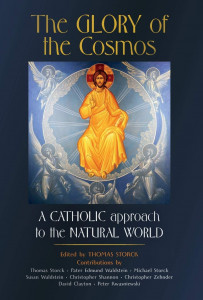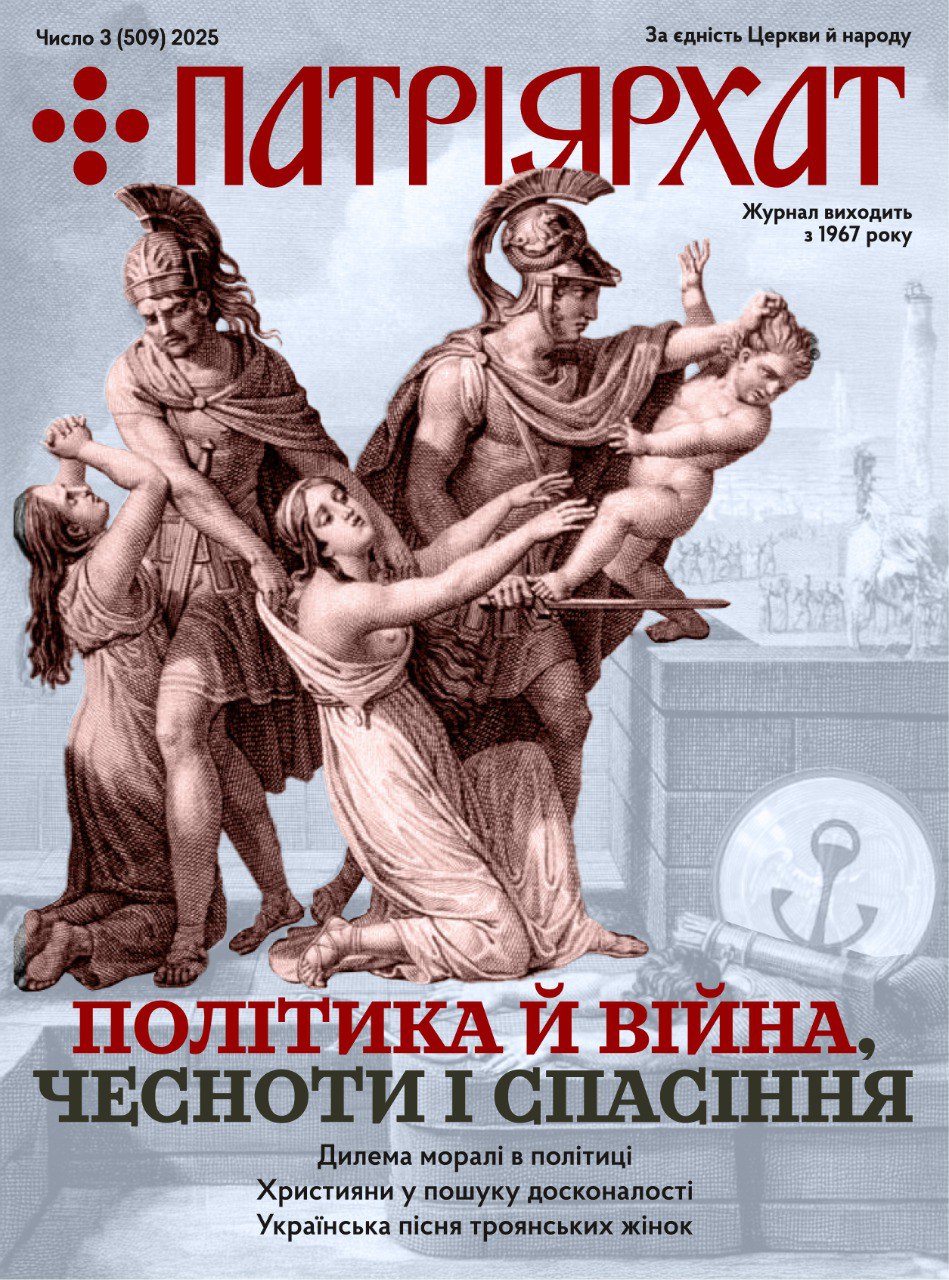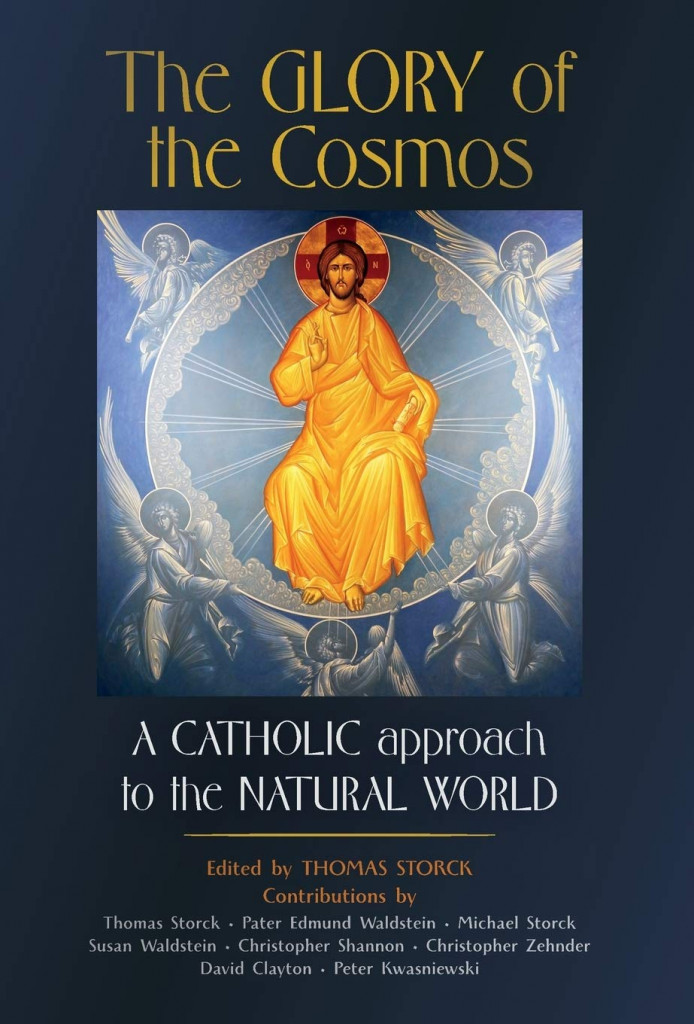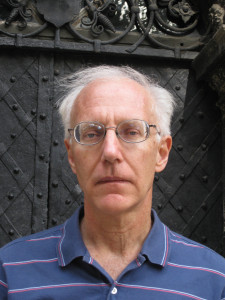Glory of the Cosmos: A Catholic Approach to the Natural World. Edited by Thomas Storck. Waterloo, Ontario: Arouca Press, 2020. 152 pages. ISBN 978-1-989905-26-5 (paperback)
 On this one hundred fiftieth anniversary of the birth of Lesya Ukrainka, Ukrainians are again prompted to consider their attitude towards the natural world. For one of the principal themes of her most famous play, “The Song of the Forest” (1911), is man’s relationship to nature. It is not merely a matter of folk beliefs about water nymphs and wood sprites, or of pagan notions of divine immanence. The contrast between Lukash’s fashioning a flute from a birch tree, and his attempt to cut it down, symbolizes two opposing attitudes towards nature: loving, reverent use and heedless destruction.
On this one hundred fiftieth anniversary of the birth of Lesya Ukrainka, Ukrainians are again prompted to consider their attitude towards the natural world. For one of the principal themes of her most famous play, “The Song of the Forest” (1911), is man’s relationship to nature. It is not merely a matter of folk beliefs about water nymphs and wood sprites, or of pagan notions of divine immanence. The contrast between Lukash’s fashioning a flute from a birch tree, and his attempt to cut it down, symbolizes two opposing attitudes towards nature: loving, reverent use and heedless destruction.
The conflict between these two attitudes is a central theme of The Glory of the Cosmos. In this collection, eight Catholic thinkers explore the theological underpinnings, as well as some practical applications, of the Church’s teaching about the natural environment. Editor Thomas Storck introduces the volume and contributes essays on relevant portions of the Catholic Catechism as well as on Pope Francis’ 2015 encyclical Laudato Si’. Pater Edmund Waldstein of the Cistercian Abbey of Heiligenkreuz near Vienna lays the philosophical foundation by contrasting the conceptions of Aristotle and Descartes. While Susan Waldstein criticizes the neo-Darwinian neglect of natural hierarchy and proposes a new natural science that takes into account the insights of Swiss zoologist Adolf Portmann, Christopher Shannon considers the relationship of nature and “culture” in Romano Guardini’s Letters from Lake Como. Christopher Zehnder examines relevant scriptural sources, especially the book of Genesis; David Clayton relates numerical patterns in the cosmos to divine beauty. In a chapter entitled “Brother Wolf or Robo-Dog?” Michael Hector Storck critiques modern physics, chemistry, and biological science through the lens of Thomist philosophy; his observations are particularly relevant to contemporary robotics. Turning to another application of modern science and technology, Peter Kwasniewski casts a critical eye on the ethics of genetically modified organisms. He completes the volume with some reflections on Aristotle and Descartes as well as St. Thomas Aquinas, Leibniz and Heidegger.
What is the contemporary secular view of the universe? Susan Waldstein describes it in these words:
No being in this universe has more value than any other being; indeed, no being has any intrinsic value at all. All value judgments are imposed arbitrarily by human will. Nature is seen, as Pope Francis says, as “something formless, completely open to manipulation.”[1] It is investigated in order to be used. The universe is a meaningless assemblage of bodies moving according to natural laws, from which life and man emerged by chance. We came to be for no reason and have no reason to live for any particular goal. (p. 35)
In his essay on genetically modified organisms, Kwasniewski shows how this world view has permitted us to develop and deploy technology that intrudes into the heart of nature, dominating rather than cooperating with it. He connects this attitude with Western capitalist culture (pp. 125-26). Quoting St. John Paul II, Kwasniewski characterizes biological experimentation by powerful First World nations and private interests in Third World countries as a new form of colonialism (pp. 116-19). Ukrainians should take note: colonialism has more than one shape and source.
Indeed, one of the lessons of this book is that environmental issues are connected with a whole range of problems beyond the purely scientific. As Thomas Storck points out in his analysis of Laudato Si’, the Catholic attitude toward Creation is inseparable from the Church’s social and economic teaching. Contemporary secular attitudes towards nature even affect issues of sex and gender. For example, the “technocratic paradigm” gives rise to the belief that we are entitled to manipulate our bodies in accord with our own notions of our “gender identity” (pp. 131-32).
One may object, however, that we should not idealize nature, for the created world is imperfect. In fact, the notion of “perfect” appears several times in the book before we are given a definition. Referring to Thomas Aquinas’ discussion of beauty, David Clayton states that “perfection” relates the form of a thing to its intended purpose. Since the Fall of man, however, the perfect order of the material universe has been disrupted, “so that it is no longer perfect.” Yet despite this “disorder,” where the universe no longer corresponds to the divine pattern, it is still good and beautiful, and points to the ideal of what it ought to be (p. 105). Christopher Zehnder notes that man, as “bridge-builder,” can unite this degraded material universe with the perfect spiritual world in the process of his own theosis (p. 85). Theosis, of course, is a key concept in Eastern Christian theology. It may offer a key to an Eastern Christian understanding of ecology. This could be a fruitful project for our theologians.
At first glance, this collection seems to present two contradictory views of the role of mathematics in our understanding of the natural world. We read in the introduction that the presuppositions and methodology of modern science, which can be traced to philosophical nominalism and were developed in the mathematical thought of Rene Descartes, reduced nature to what is quantifiable. As C. S. Lewis observed, this “substituted a mechanical for a genial or animistic conception of the universe,” with the resultant loss of the mythical imagination. It also separated nature from God and subjected it to exploitation, particularly during the Industrial Revolution and modern capitalism (pp. xii-xiii). On the other hand, as David Clayton argues, a mathematical description of the natural order reveals the “heavenly liturgy,” which the “earthly liturgy” ought to reflect. This means not only the liturgy per se, but church architecture, art, and music – even the liturgical actions of “kneeling, praying, standing” — all of which mirror natural proportions that can be expressed by numbers (pp. 89-90). In his essay on Romano Guardini, Christopher Shannon agrees, going so far as to say, “Structured as it is according to the hours of the day and the days of the year, the liturgy is the most ecological of cultural practices.” (p. 62) (It should be evident that this observation is at least equally applicable to our Kyivan Byzantine tradition.) Thus, the contradiction in the role of mathematics is only apparent, for the determining factor is our intent in mathematical measurement: do we intend to control and exploit the natural world, or to understand, praise, and protect it?
Written with a minimum of scientific or theological jargon, this slim volume should be accessible to anyone with a good reading knowledge of English. In fact, the plain language of the authors, most of whom have taught undergraduates, suggests that they do not pursue abstruse or fashionable theologies of the academic “establishment,” but seek rather to present authentic Catholic teaching.
For today’s Ukrainians, proper attention to environmental issues cannot be limited to protecting the wetlands of Lesya Ukrainka’s Polissia, or what remains of the Carpathian forests, from predatory exploiters – though these necessary tasks are daunting enough. The Churches should foster a deep environmental consciousness among their clergy and faithful rooted in a Christian understanding of the created world and our obligations to it. In that vital enterprise, this stimulating and inspiring book serves as a dependable guide.
1 Andrew Sorokowski is retired from the U.S. Department of Justice, where he served as a researcher in the Environment and Natural Resources Division. He is president of the Ukrainian Patriarchal Society in the USA.
[1] Pope Francis, Laudato Si’, no. 106.


